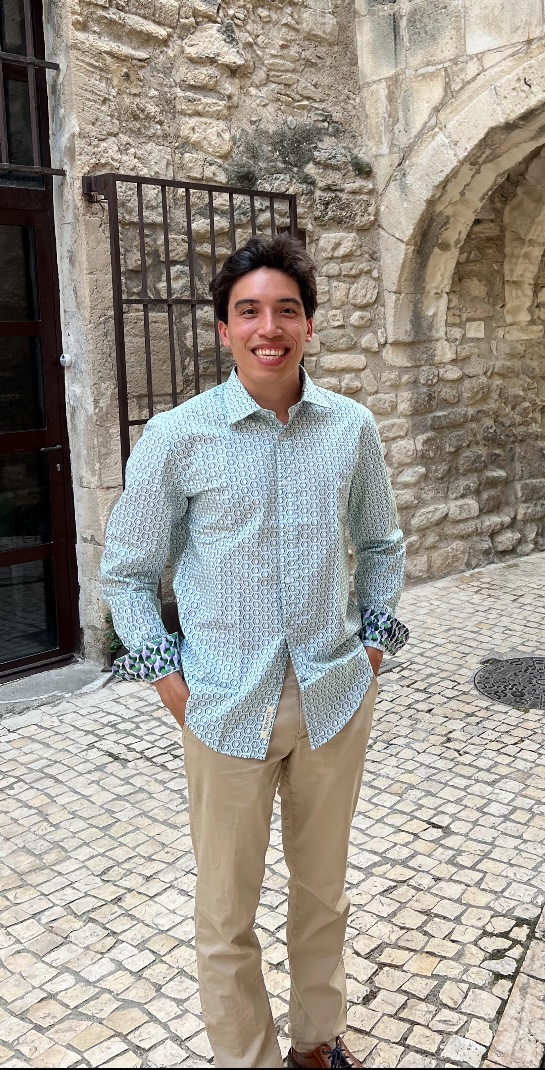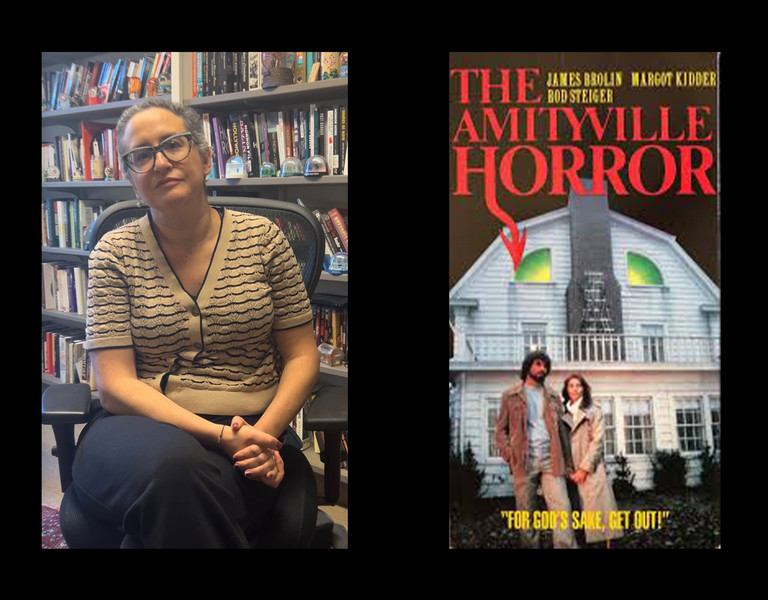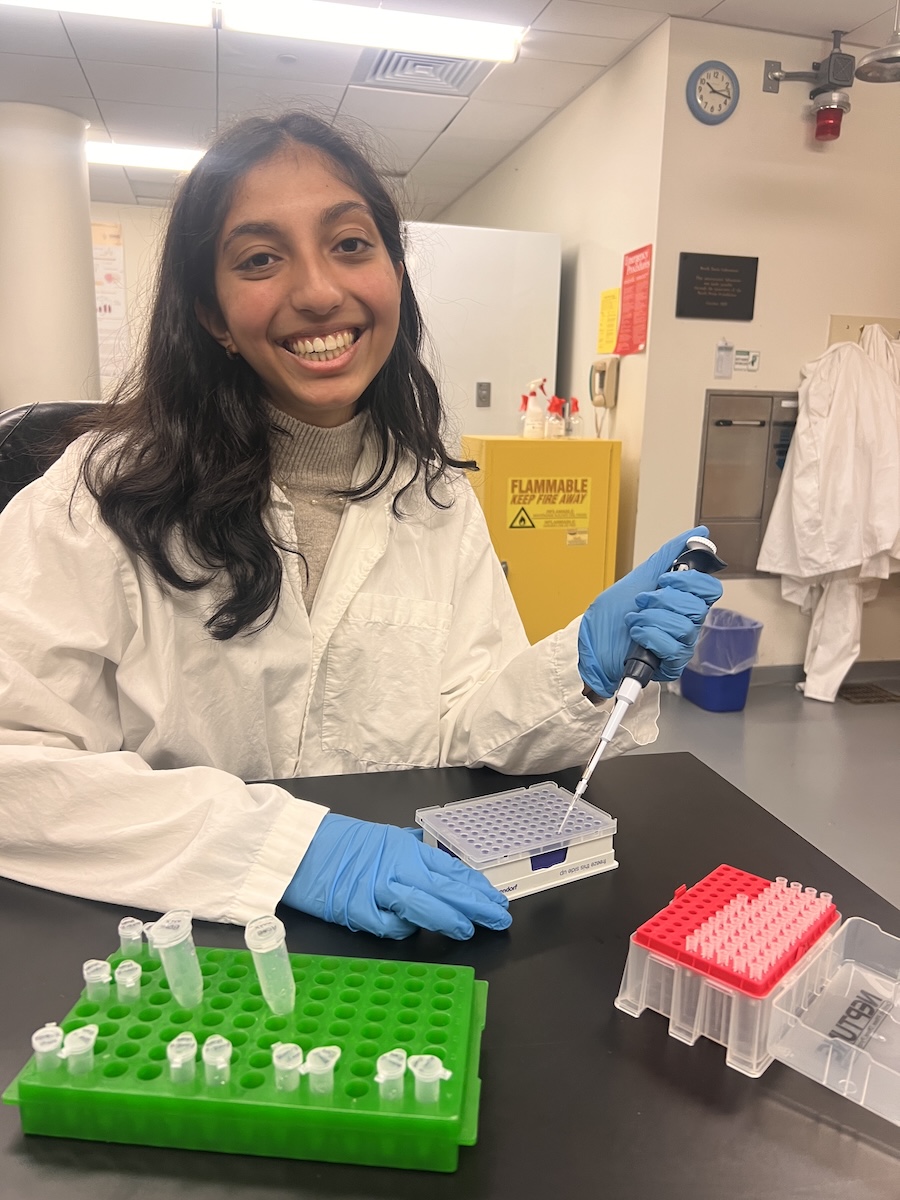Oliver Clachko ’26: Seeking the Source of Mark Twain's Humor
By Rebecca GoldfineWhile Clachko has appreciated the other early-American writers he's read in his English classes, he's been especially delighted by Mark Twain’s stories, like A Connecticut Yankee in King Arthur’s Court and The Adventures of Huckleberry Finn.

This profile is part of a series on students who have received fall research awards to pursue faculty-mentored, independent projects. Clachko was awarded the Peter J. Grua and Mary G. O'Connell Faculty/Student Research Fund.
“It shocked me how funny his stuff was, even though it was written 140 years ago,” Clachko said. “Twain’s writing feels modern, readable, and fun to engage with.”
Twain’s humor is one reason his books remain so enduring, Clachko noted. “Humor plays such a big role in his work and gives it a sense of timelessness. The stories aren’t bound by political or didactic messages—they’re rooted in characters and common experiences that everyone can relate to.”
Already curious about the mechanics of humor more generally, the English and math major decided to spend this fall working with Tess Chakkalakal, professor of Africana studies and English, on an independent study exploring Twain’s comic deftness
“My [independent study] was a chance to think about these questions in a way that is not offered in any other classes,” Clachko said.
Each fall, the student fellowships and research office awards grants for up to $2,500 to students pursuing research for independent studies or honors projects during the academic year.
The awards are supported by endowed funds set up by donors who wish to enable faculty-mentored research across the disciplines.
This year, the office gave awards to thirty-four students—majors in Africana studies, anthropology, biology, chemistry, classics, computer science, digital and computational studies, earth and oceanographic science, education, English, environmental studies, government, history, neuroscience, and Romance languages.
A Fall Research Award from Bowdoin’s Office of Student Fellowships and Research is supporting a two-day trip for Clachko to the Mark Twain House & Museum in Hartford, Connecticut. He’ll tour the house, dig into its archives, and also visit the Mark Twain Library in Redding to do more archival research.
Clachko hopes these sources—even the house tour—offer up clues about how Twain wielded humor. Twain himself didn’t reveal much about his storytelling techniques (“He was cagey,” Clachko said), beyond a brief 1897 essay titled “How to Tell a Story.”
Instead, Clachko is looking for hints in Twain’s personal belongings, letters, and notes, as well as in his published travelogues, essays, and novels. He's also studying transcripts and reviews of Twain’s public talks, which were wildly popular, partly because they made audiences laugh.
“Some people call Twain the first stand-up comedian,” Clachko said. After a series of bad investments, Twain would take to the road to give talks and earn money. Not as skilled with finances as with words, he was “always in and out of bankruptcy.”
According to Clachko, one of the ways Twain amused readers and audiences was through his accessibility—both in his own persona and in the narrators he created. These characters were relatable, sympathetic, and often unaware of how funny they were. “To tell a funny story, he said, the person telling it shouldn’t know it’s funny,” Clachko explained.
Twain was allergic to pretension. “He hated jokes that relied on specialized knowledge or obscure references,” Clachko continued. “He found them self-important and exclusive, and his humor works in contrast to that. It’s often based on misunderstandings by naïve or innocent narrators who don’t quite grasp what’s going on.”
Reading and Laughing Out Loud
After talking about his research project, Clachko described a couple of the moments that made him laugh in one of Twain's funniest works, A Connecticut Yankee in King Arthur's Court:
The main character wakes up in medieval England after being transported through time and assumes he’s arrived at an insane asylum. When he meets a young page at court, he observes:
“By his look, he was good-natured; by his gait, he was satisfied with himself. He was pretty enough to frame. He arrived, looked me over with a smiling and impudent curiosity; said he had come for me, and informed me that he was a page. ‘Go ’long,’ I said; ‘you ain’t more than a paragraph.’
Later in the same novel, as the protagonist is preparing to join a quest to save a woman from a dragon, his thoughts drift from the mission at hand to reflect on many things, including the discomfort of traveling in armor:
“A man in armor always trusted to chance for his food on a journey, and would have been scandalized at the idea of hanging a basket of sandwiches on his spear. There was probably not a knight of all the Round Table combination who would not rather have died than been caught carrying such a thing as that on his flagstaff. And yet there could not be anything more sensible. It had been my intention to smuggle a couple of sandwiches into my helmet, but I was interrupted in the act, and had to make an excuse and lay them aside, and a dog got them.”
Clachko is majoring in English and math and minoring in urban studies. Among his favorite classes at Bowdoin are these three:
Reading “Uncle Tom’s Cabin,” with Tess Chakkalakal: The class introduces students to the history of reader responses to Harriet Beecher Stowe’s 1852 antislavery novel, Uncle Tom’s Cabin.“The class was about deep and relevant topics, and I liked how it was taught. Our professor pushed us to challenge each other's arguments and think about things in new ways.”
Poetry and the City, with Samia Rahimtoola: The course considers the role of poetry in urban society and the influence of urbanism on verse, especially in Chicago, New York, and San Francisco. “Poetry was foreign to me before, but after being exposed to a lot of new concepts, I am able to understand poetry, or can try to understand it, better.”
Rings and Fields, with Ray Maresca: The class introduces students to algebraic structures based on the study of rings and fields. “Again, it was a new way of thinking, a new type of math for me, abstract algebra, and we thought about how numbers work together. I think that for me, a lot of the math I like to do, like algebra, helps to develop a strong sense of logic, which I have translated into my writing, especially when I am making an argument.”
Read about other student researchers in this series: Mingi Kang ’26, Alexa Comess ’26, Kaya Patel ’26, Will Tran ’26, and more to come!



